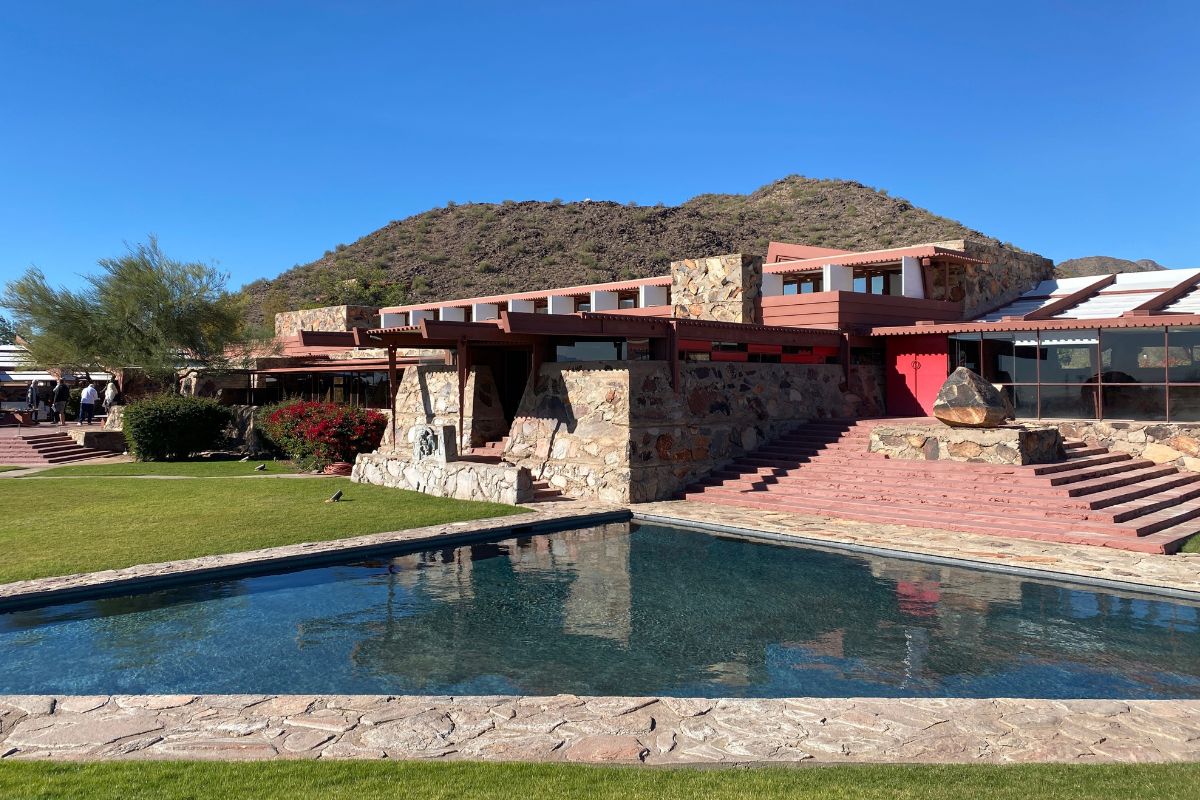Secrets Of Taliesin West Revealed

Have you ever wondered what makes Taliesin West such a special place? Nestled in the Arizona desert, this architectural gem was the winter home of Frank Lloyd Wright. It’s not just a house; it’s a living, breathing piece of art. Built in 1937, Taliesin West showcases Wright's unique design philosophy, blending indoor and outdoor spaces seamlessly. Visitors can explore its stunning rooms, gardens, and walkways, all while learning about Wright's innovative ideas. Whether you're an architecture enthusiast or just curious, Taliesin West offers a glimpse into the mind of one of America's greatest architects. Ready to uncover its secrets?
Taliesin West: A Desert Masterpiece
Taliesin West, Frank Lloyd Wright's winter home and architectural school, stands as a testament to his genius. Nestled in the Sonoran Desert, this National Historic Landmark offers a unique blend of natural beauty and innovative design. Let's explore some of the secrets that make Taliesin West a must-visit destination.
The Living Quarters
Wright's living quarters at Taliesin West reflect his philosophy of organic architecture, harmonizing with the surrounding desert landscape.
Wright's Private Office: This space served as both a personal retreat and a creative hub. The office features large windows that frame stunning desert views, allowing natural light to flood the room.
The Garden Room: Known for its expansive windows and comfortable seating, the Garden Room was a favorite spot for Wright to entertain guests. The room's design encourages a seamless connection between indoor and outdoor spaces.
The Drafting Studio: Here, Wright and his apprentices worked on numerous projects. The studio's open layout and abundant natural light fostered a collaborative and inspiring environment.
Architectural Innovations
Taliesin West showcases Wright's innovative use of materials and construction techniques, many of which were ahead of their time.
Desert Masonry: Wright developed a unique method of construction using local stone and concrete. This technique not only blended the buildings with their surroundings but also provided excellent insulation against the desert heat.
Canvas Roofs: The original roofs at Taliesin West were made of translucent canvas, allowing soft, diffused light to fill the interiors. This design choice created a warm and inviting atmosphere while reducing the need for artificial lighting.
Low-Slung Rooflines: Wright's use of low, horizontal rooflines helped the buildings blend seamlessly with the desert landscape. This design element also provided shade and protection from the harsh sun.
Hidden Gems
Beyond the well-known features, Taliesin West hides several lesser-known treasures that offer a deeper understanding of Wright's vision.
The Kiva: This underground space, inspired by Native American ceremonial rooms, served as a private theater for Wright and his guests. The Kiva's intimate setting and unique acoustics made it perfect for small performances and gatherings.
The Cabaret Theater: Designed for optimal acoustics, this cozy theater hosted musical performances, lectures, and film screenings. Its curved walls and low ceiling create an intimate and immersive experience.
The Music Pavilion: Originally an open-air space, the Music Pavilion was later enclosed to provide a more comfortable environment for performances. The pavilion's design emphasizes Wright's belief in the importance of music and the arts in daily life.
The Natural Environment
Wright's design philosophy extended beyond the buildings themselves to the surrounding landscape, creating a harmonious relationship between architecture and nature.
The Desert Walk: This guided path takes visitors through the natural desert landscape surrounding Taliesin West. Along the way, you'll encounter native plants and wildlife, as well as stunning views of the McDowell Mountains.
The Reflecting Pool: Located near the main entrance, the Reflecting Pool adds a serene and contemplative element to the site. The pool's still waters mirror the surrounding architecture, creating a sense of balance and tranquility.
The Cactus Garden: This carefully curated garden showcases a variety of cacti and other desert plants. The garden highlights Wright's appreciation for the natural beauty of the desert and his commitment to sustainable design practices.
Taliesin West's Timeless Appeal
Taliesin West stands as a testament to Frank Lloyd Wright's genius. This architectural marvel, nestled in the Arizona desert, showcases Wright's innovative design and deep connection to nature. Visitors can explore the unique structures, each telling a story of creativity and vision. The use of local materials and integration with the landscape make Taliesin West a must-see for architecture enthusiasts. Guided tours offer insights into Wright's life and work, providing a deeper appreciation for his contributions to modern architecture. Whether you're an avid fan of Wright or simply curious about architectural history, Taliesin West offers a fascinating glimpse into the mind of one of America's greatest architects. Plan your visit to experience firsthand the beauty and ingenuity of this iconic landmark.

